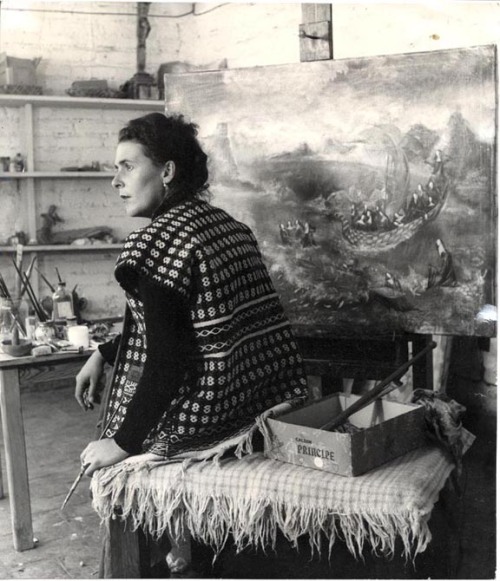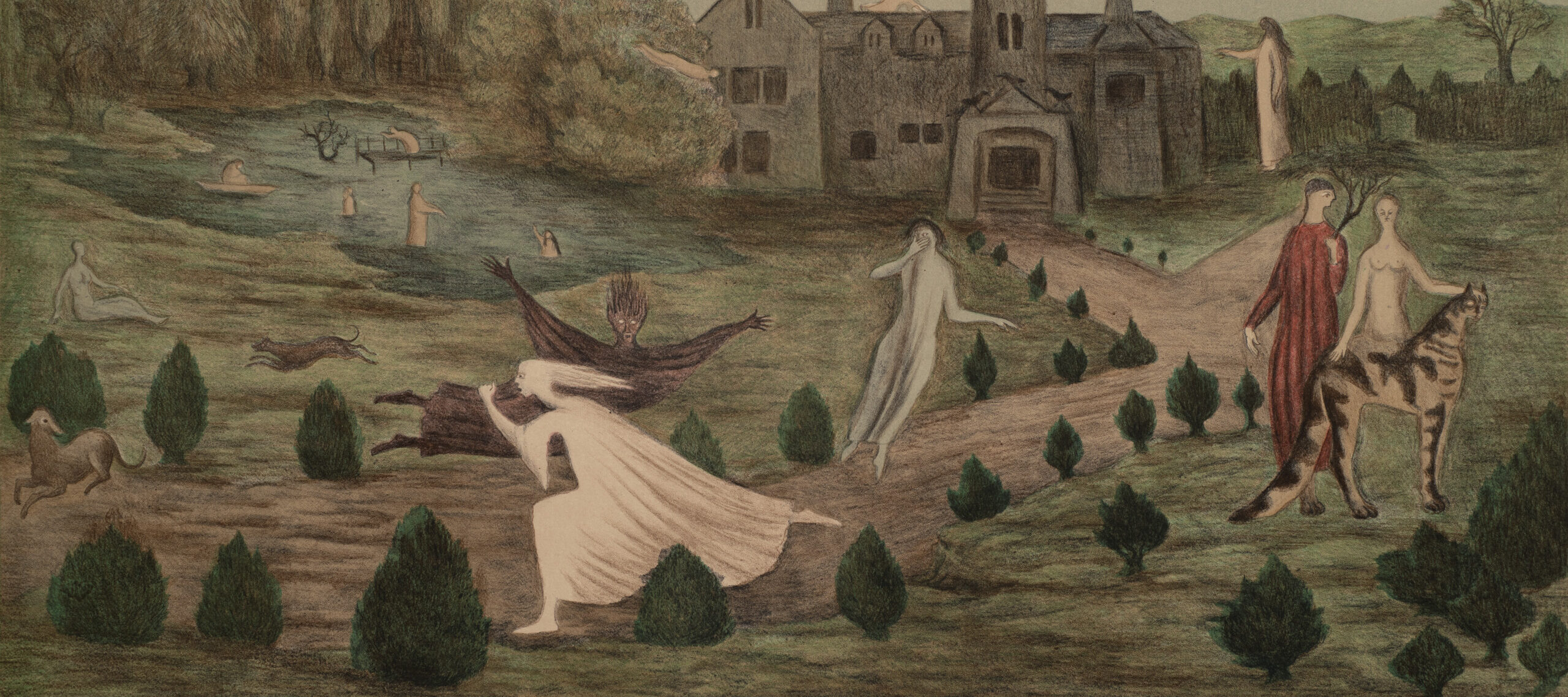The art of Leonora Carrington (1917–2011) belongs to “a magical realm between sleep and waking, conscious and unconscious.”¹ On April 6, 2013, we celebrate the enchanting artist on what would have been her 96th birthday. From a grade-school rebel to rising in Surrealist ranks, Carrington escaped Nazis and mental institutions, and found herself at home in Mexico.
From an affluent family in England, Carrington was groomed to be a debutante. Resisting the confines of conformity, Carrington ran away from boarding schools and was reportedly expelled for exhibiting “anti-social tendencies and supernatural proclivities.”

Ultimately, her parents yielded to her passions and allowed her to pursue an arts education in London, under cubist Amédée Ozenfant.
Carrington became inspired by Surrealist art after visiting London’s International Surrealist exhibition in 1936. A year later, she met and fell in love with a pioneer painter of Surrealism, Max Ernst, and lived with him after he divorced his wife.
She began to paint her own dreamlike works and attend Surrealist gatherings, where she famously served guests omelettes with their own hair. Adored by the group but also recognized for her artistic talent, Carrington exhibited with them internationally.
During World War II, German-born Ernst was imprisoned and Carrington escaped to Spain where she had a breakdown and was committed to a mental asylum. When her family sent their nanny to collect her, Carrington fled to the Mexican embassy. She married Mexican diplomat Renato Reduc to facilitate her flight from Europe.
Upon moving to Mexico City, Carrington became an integral part of a thriving artistic community along with her friend and fellow Surrealist, Remedios Varo. After divorcing Leduc, she married Hungarian photographer Emeric Weisz and had two sons.

Carrington enjoyed a successful career with many solo and group shows around the world, including a one-woman exhibition at New York’s Pierre Matisse Gallery.
As a painter, sculptor, and writer, Carrington’s works integrate imagery from disparate cultural sources. Inspired by Mayan folklore, Celtic legends, Tibetan Buddhism, alchemy, and the occult, her otherworldly works are both eerie and whimsical. Chimeric figures often animate her complex interiors and magical landscapes.
NMWA’s collection contains two of Carrington’s works. Carrington painted Samhain Skin on animal skin, recalling an ancient Celtic festival. This work’s anthropomorphic figures allude to mythical fairy people, sprung from the stories her Irish grandmother told her.
In a dimension between genius and insanity, Carrington’s heightened mental state conjured some of Surrealism’s most visionary works. Although she was a charismatic artist with a prolific, seven-decade career, she remains an enigma. A rogue in her own right, Leonora Carrington refused to reveal the meanings behind her haunting images, and they will forever be left to viewers’ imaginations.
Notes:
1. Alberth, Susan L. (2004). Leonora Carrington: Surrealism, Alchemy and Art. Lund Humphries, p. 33.
